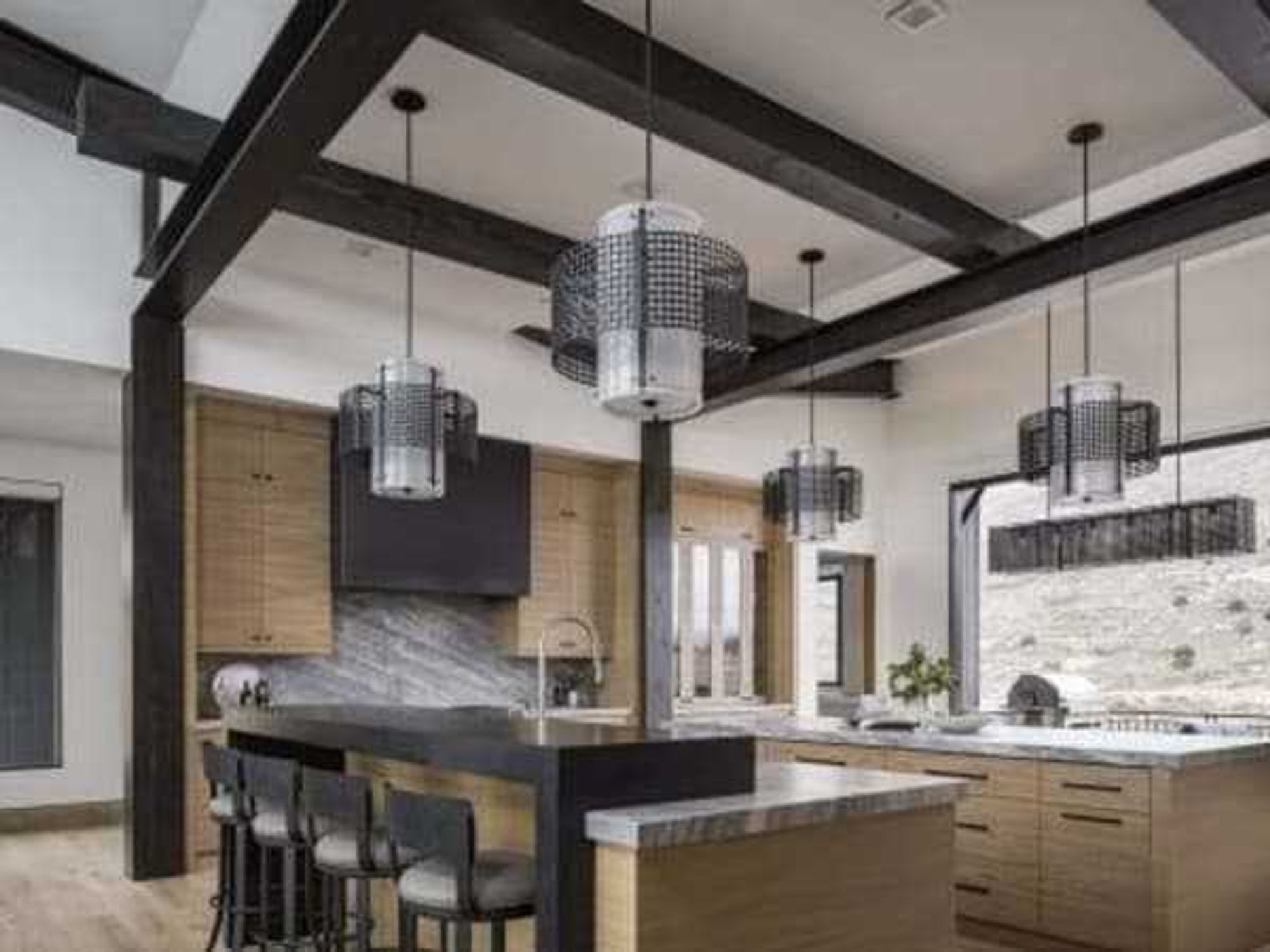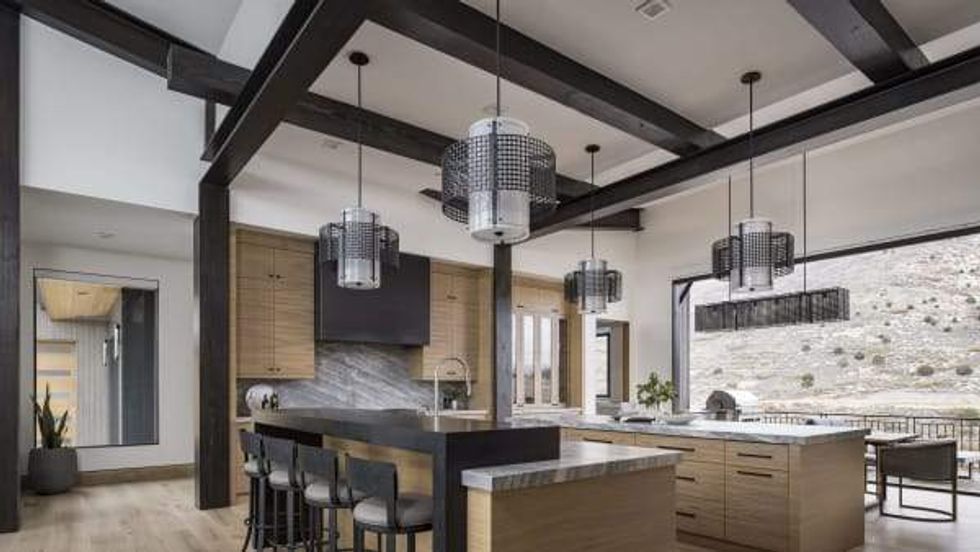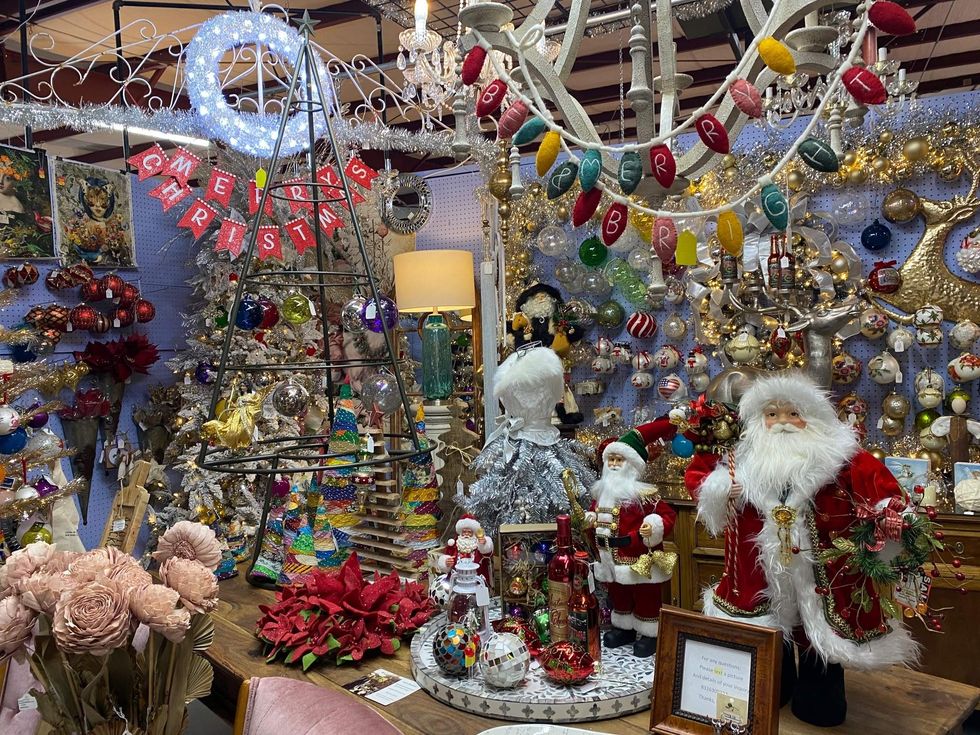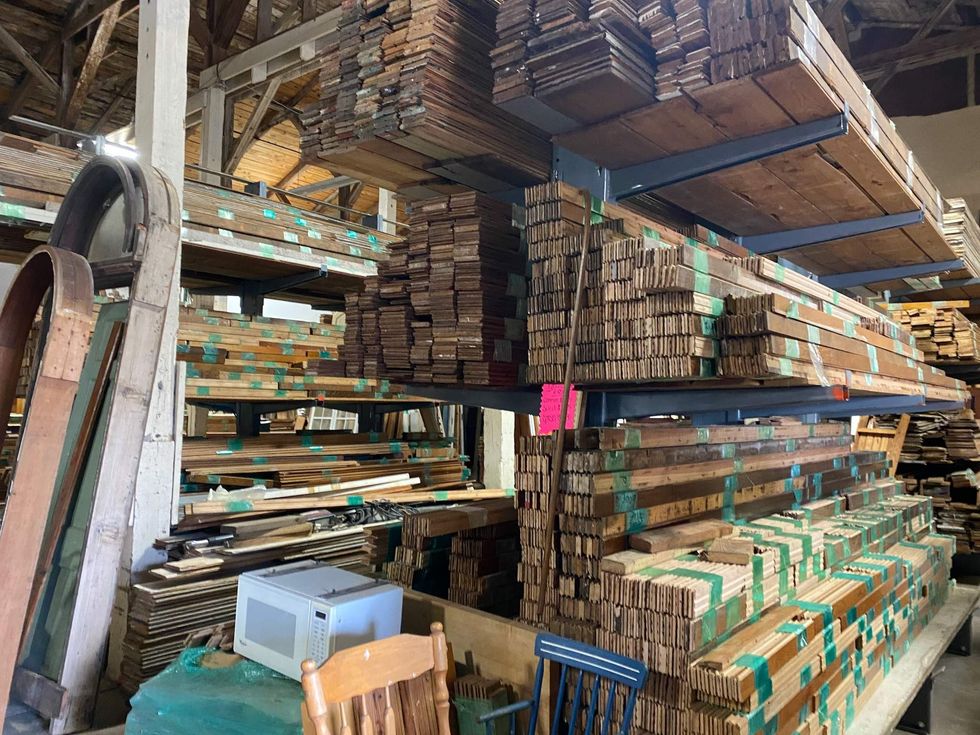wall drawing
Houston architect's towering Sol LeWitt installation is a piece of American arthistory
Sol LeWitt created more than 1,200 wall drawings before his death in 2007, but that doesn't make spotting one in the wild any less exciting, especially when it's 30 feet tall and installed in one of Houston's most well-known residential designs from the 1990s.
"I sometimes say I built the house because I wanted to commission Sol to do a wall drawing," laughed architect Bill Stern during a recent tour of his award-winning home and the collection of art he rotates throughout each year.
"I sometimes say I built the house because I wanted to commission Sol to do a wall drawing," laughed architect Bill Stern.
"Honestly, though, the piece was never part of the original design. I sent plans, photographs and models to show Sol what the house was going to look like. Everything was approved and commissioned right before we broke ground."
Stern's relationship with LeWitt dated back to the 1970s as the architect was beginning his career with the acclaimed Edward Larrabee Barnes, who remains widely recognized for his designs for the Dallas Museum of Art and the Walker Art Center in Minneapolis.
"I began collecting art sometime in the mid-'70s, which was when I first met Sol," Stern explained, noting that he still has the delicate LeWitt drawing he purchased during their early meetings. As his collection grew in the following decades, the architect's penchant for clean, simple lines led him to other minimalists like Donald Judd and Carl Andre, with Stern owning several works by the latter.
"Piece-by-piece the collection grew and by the time I considered building my own house, I wanted to create something that would shape the experience of viewing art with light and space," he said.
Process and placement
Painted onto the front wall of Stern's living room — a bright and airy three-story space around which much of the design is centered — LeWitt's massive project is a testament to the architect's "light and space" approach, which relies on diffuse natural light (à la Renzo Piano's two Menil buildings) to allow the work to speak for itself.
From a distance, the wall drawing is a simple arrangement of colored lines and rectangles. Up close, however, one can see additional thick layers of washes and the sharp edges where one hue meets another.
"These rich tones are made by layering on the ink with cotton cloth. The bluish color, for example, is 21 layers of the blue and black inks."
"When the artists painted the piece, they only used four colors of ink — blue, yellow, red, black — and diluted each in buckets of water," the architect remembered, adding that noted Texas artists Jeff Elrod and Aaron Parazette were both on the work crew employed by LeWitt, who never physically touched his final pieces.
"These rich tones are made by layering on the ink with cotton cloth. The bluish color, for example, is 21 layers of the blue and black inks. The process almost gives the look of a fresco, but it's not. It's painted right onto the surface of the wall."
While Stern's wall drawing is only on view during the occasional open house, Houstonians can see one of the artist's colorful later examples at the Hobby Center in the lobby of Sarofim Hall.
The Menil Collection also maintains nearly 20 rare LeWitt prints and drawings that are displayed on a regular basis. The Museum of Fine Arts, Houston, meanwhile, owns a major sculpture from 1966 that frequently makes its way into public view.





